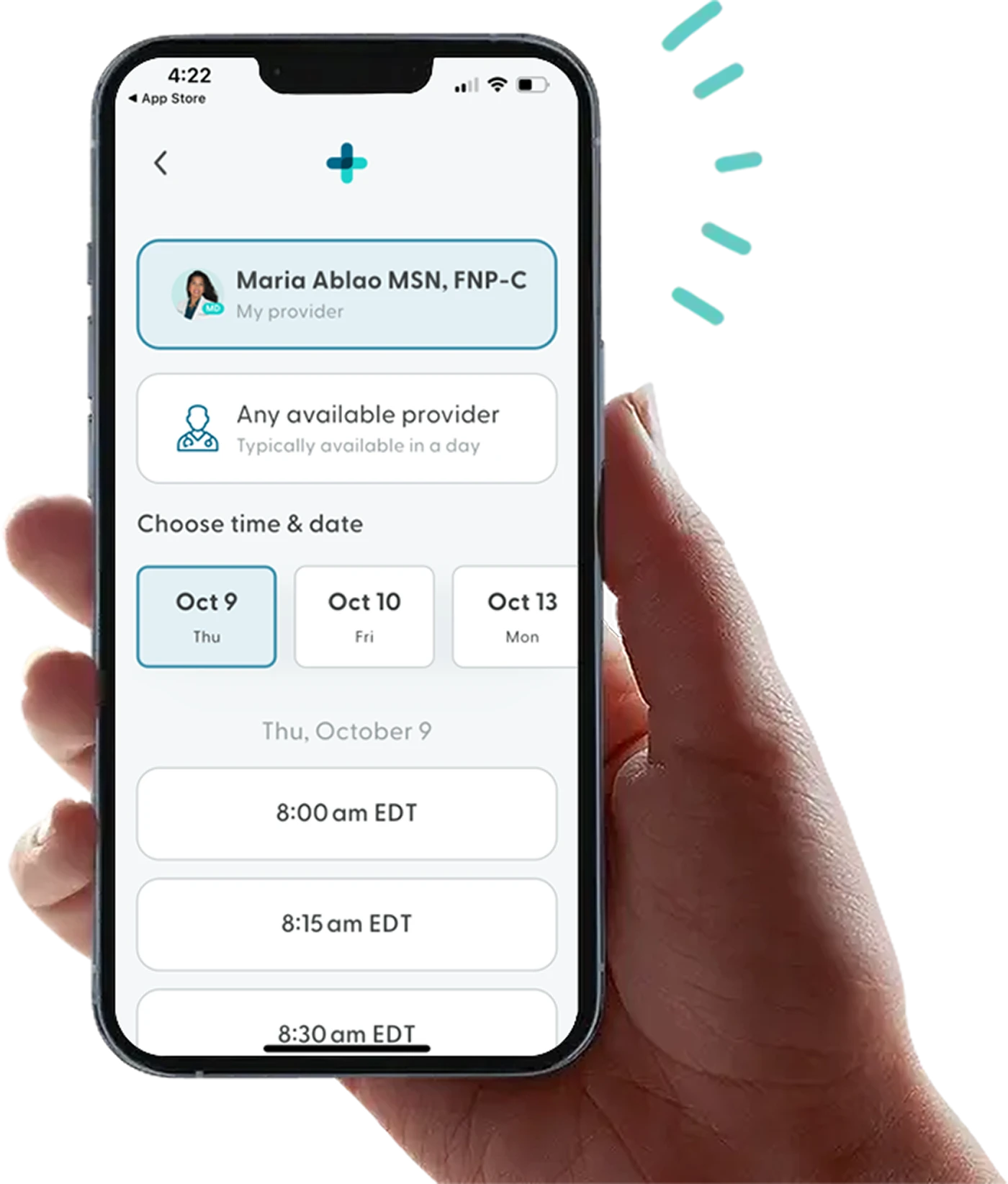Why are So Many People Allergic To Peanuts?
For some of us, it’s impossible to imagine a day without some peanut butter-covered toast or a Reese’s cup. But for others, it’s impossible to imagine a day with those foods. Peanut allergies affect nearly 2.5% of children in the United States, and studies have reported a 27% increase in the prevalence of peanut allergies since 2010.
But why do so many people have this pesky peanut aversion? After all, it’s just peanuts… so how are they so harmful to some people’s health? Here’s everything you need to know about why peanut allergies are among the most common types of food allergies in the world.
Food allergies affecting your daily life?
Speak to a healthcare provider online about your allergy symptoms today.


What Causes Peanut Allergies?
An allergic reaction occurs when the immune system perceives a harmless substance as a threat. It’s why you might sneeze in the presence of pollen or sniffle at the whiff of mold spores.
When a person has a peanut allergy, proteins in the peanut bind to proteins called specific IgE antibodies. These are antibodies produced by the immune system that travel to cells and release chemicals (like histamine) that cause an allergic reaction.
Exposure to peanuts when munching on a PB&J, for instance, triggers a person’s immune defenses.
When you are allergic to peanuts, your immune system can trigger a reaction called anaphylaxis. Anaphylaxis is a potentially life-threatening allergic reaction to peanuts that involves an intense drop in blood pressure and constriction of the airways.
Be sure to always check the food products you buy and make sure they do not contain peanuts or any nuts in the ingredients if you are allergic.
Why are Peanut Allergies So Common?
Nut allergies — including those to cashews, walnuts, pistachios, hazelnuts, pecans, and almonds, are very common, though researchers still don’t fully understand why. Peanuts, despite being commonly grouped with tree nuts, are actually legumes — a family of plants that includes beans, lentils, and peas.
One theory is that we’re eating way more peanuts and other legumes than our ancestors ever did, which could be setting up future generations for peanut allergies. More exposure could be priming immune systems to react negatively. Another possibility is that because peanuts are so widely eaten, peanut allergies simply seem more common than they actually are.
Finally, since allergies are genetic, it may just be that more parents are transmitting their allergies to their children after birth. The bottom line is that no one knows for sure, and if we had a clearer answer, we might be able to stop peanut allergies in their tracks. The good news is that there are still ways to alleviate allergies, even to peanuts!
How is a Peanut Allergy Diagnosed?
Diagnosing a peanut allergy is an essential part of managing and treating this condition effectively. Your healthcare provider will conduct a physical examination and medical tests to confirm your diagnosis.
During the process, you can expect the following:
Medical history evaluation and physical check-up: Initially, your doctor will review your symptoms, their severity, and timing, and inquire about your family's allergy history to assess the risk of a peanut allergy.
Skin prick test: Next, your doctor may recommend a skin prick test. This is a common method for diagnosing allergies and involves pricking the skin and exposing it to an allergen. If itchy red bumps appear, it indicates a possible allergic reaction.
Blood test: Your doctor may also recommend a blood test to measure your immune response to peanut proteins. In this test, a small allergen dose is injected, and blood is drawn to measure antibody levels. Elevated antibodies usually indicate a peanut allergy.
These tests must be conducted by a healthcare professional to manage the risk of a severe reaction, ensuring immediate intervention if needed.
Can You Treat Peanut Allergies?
You won’t be able to use antihistamines to treat peanut allergies. But if you have allergic reactions to peanuts there’s some light at the end of the sneezy and wheezy tunnel. That’s because peanut allergies are the only food allergies with an FDA-approved treatment.
In 2020, a treatment called Palforzia was approved to mitigate allergic reactions, including anaphylactic shock, and it can be administered to children ages four through 17 with peanut allergies. It consists of three phases that consist of increasing dosage over time.
Essentially, it’s a form of allergy immunotherapy that gradually exposes the body’s immune system to the allergen over time. After a while, the body adapts and can shield itself against foreign threats.
Can You Outgrow Peanut Allergies?
Children can often outgrow certain food allergies, particularly milk and egg. Health experts estimate that 60-80% of children will no longer have milk or egg allergies by the time they turn 16.
Unfortunately, the outlook is a bit less optimistic regarding peanut allergies. It’s believed that only 20% of children will outgrow peanut allergies. So how do you find out if you have a peanut allergy?
If you are worried you or your child has food allergies, testing can be done with a skin prick test or a blood test.
How to Manage Peanut Allergies
If you’ve got a food allergy, avoiding it is as simple as not ingesting the problematic foods. But sometimes, that can be easier said than done.
One benefit of having a peanut allergy instead of other food allergies is that it is one of the eight allergens with labeling requirements under the Food Allergen Labeling and Consumer Protection Act of 2004. This means that any products you buy in stores that contain peanuts or have been manufactured in a facility containing peanuts must be labeled accordingly.
Ask restaurant staff about ingredients, especially in desserts, and let them know ahead of time that you have an allergy so they can make sure the chef works to keep your food separate.
Delicious Peanut Alternatives
For individuals with a peanut allergy, finding an alternative can be a great way to keep enjoying your favorite dishes and snacks. Some common substitutions include:
Tree nuts (if your peanut allergy doesn’t extend to these) like almonds, cashews, and walnuts
Sunflower, pumpkin, or sesame seeds
Soy nuts
Pea protein, which can be found in protein powders, bars, and snacks
Roasted chickpeas or lentils
When choosing alternatives for peanuts, remember to read the labels carefully.
Many products are processed in facilities that also handle peanuts, which increases the risk of cross-contamination. Look for this warning on the ingredients list and, if the product has it, choose a different option.
Where Can I Learn More About Food Allergies?
At LifeMD, you can speak with a licensed healthcare provider about how to keep yourself safe when you have a peanut allergy. They can provide you with meal options you can make at home and habits to keep yourself safe.
Book an appointment today to learn more about managing a peanut allergy.
More articles like this
Feel better with LifeMD.
Your doctor is online and ready to see you.
Join LifeMD for seamless, personalized care — combining expert medical guidance, convenient prescriptions, and 24/7 virtual access to urgent and primary care.

 Medically reviewed and edited by
Medically reviewed and edited by 








